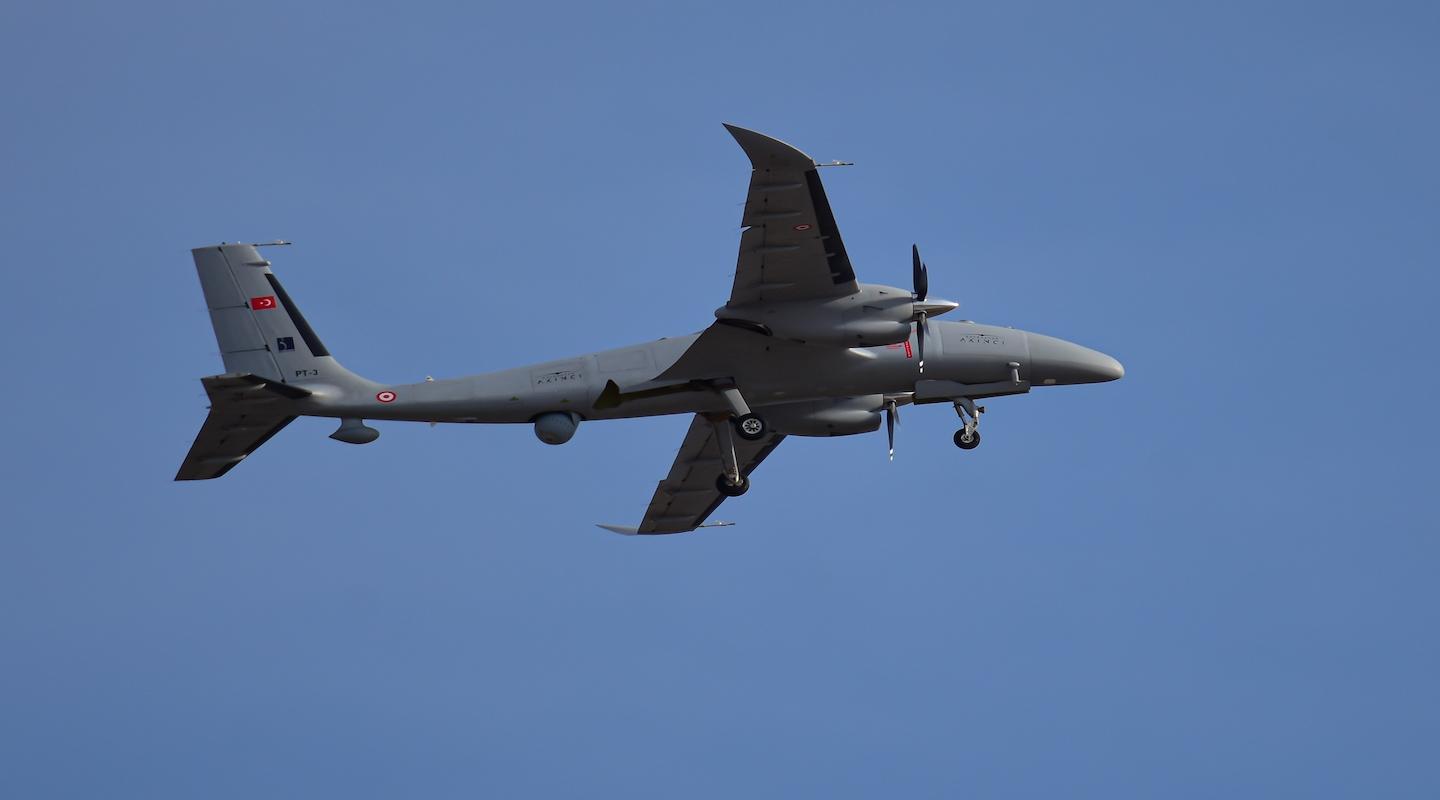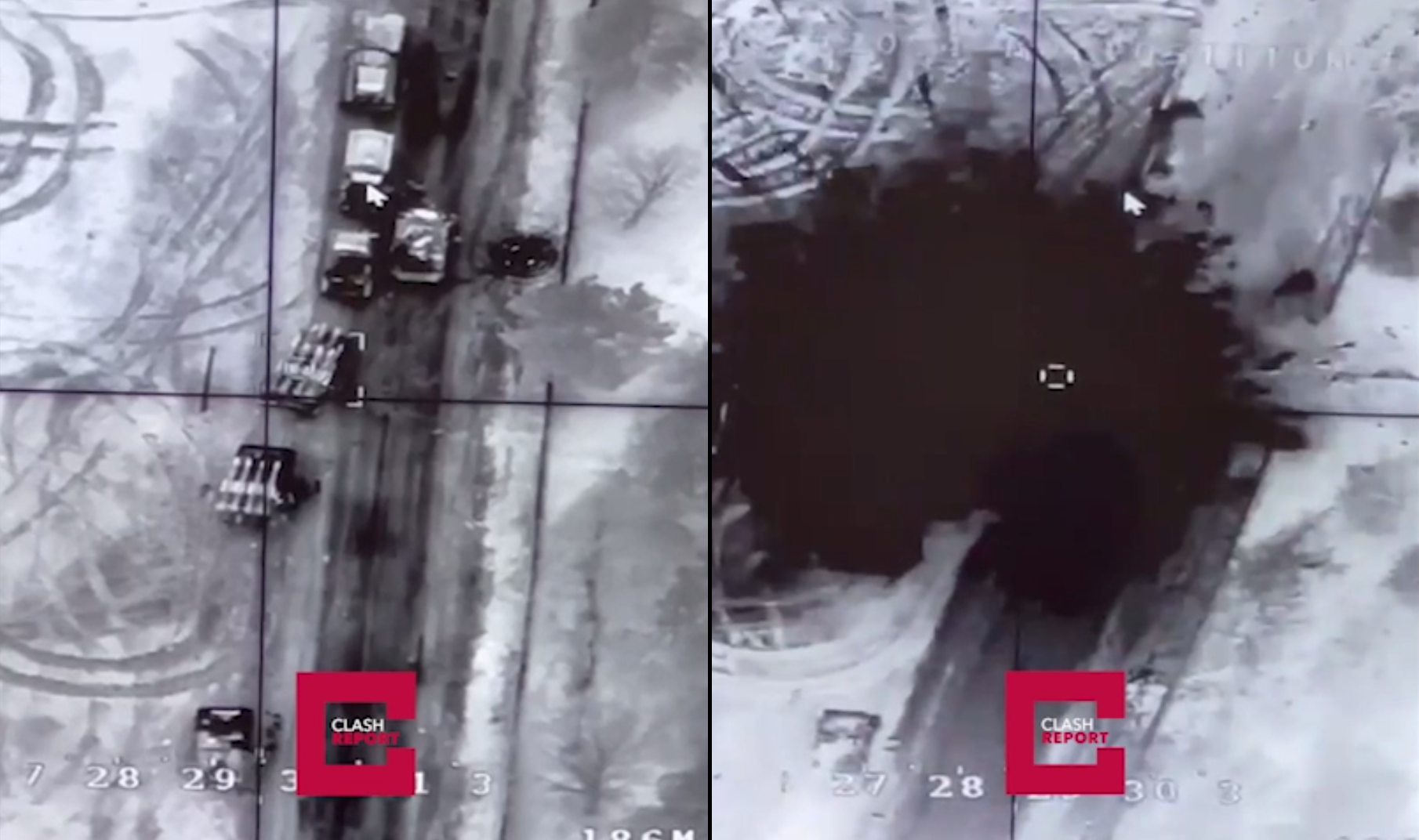
One Year Into the Russia-Ukraine War: An Assessment of Drone Deployment April 01, 2023
Since 2001, the role and efficacy of military drones in modern operations have been discussed and broadly publicized by
On the one hand, UAVs can be used effectively against groups or countries with limited or deficient air defense capabilities. But, on the other hand, UAVs cannot be used effectively against countries possessing integrated air defense and electronic warfare systems. This is why Ukraine's drones (namely, the TB2s) are currently ineffective against Russian troops. Others have suggested that UAVs will replace fighter jets or provide poor countries with an inexpensive means to possess an air force. This claim, however, does not stand to scrutiny and fails to consider that TB2s cannot be used effectively in close air support of ground troops in the Russo-Ukrainian War.
In addition, as the 44-day War in Nagorno-Karabakh shows, the effectiveness of combat drones also depends on external support and highly trained personnel. Moreover, in recent conflicts, most military drones were foreign-made and foreign-operated.
After the Russian invasion of Ukraine started on February 24, 2022, the drone debate got renewed attention, and Turkish-made drones were even dubbed “the Kalashnikov of the 21st century.” The battlefield has been largely populated by both commercial and military drones, and again, their deployment was expected to be a game changer. However, as previously reported by Federico Borsari on Orion Policy Institute, already in the early months into the invasion things turned out differently, and consequently, “the conflict […] has confirmed that drones alone are not game changers.”
During the early weeks of the invasion, many scholars, media spokespersons, and military personnel praised the success of drone operations carried out by Ukrainian forces against Russian columns of armored vehicles. Actually, those successes were mainly attributable to Russia’s tactical and operational incompetence rather than the alleged revolutionary capabilities of the drones employed by Kyiv.
On the contrary, they played no decisive role and were highly vulnerable. Russian units went deeper into Ukrainian territory without any effective close air support (CAS) and ignored some of the basic rules of the so-called modern system of force employment. Namely, a set of tactics and techniques needed to operate and survive in highly contested territory in the context of so-called hider-finder competition. Specifically, Russian soldiers failed to follow fundamental principles and techniques of warfare (tactical countermeasures) such as dispersion, camouflage, concealment, and decoys.
The deployment of drones changed in the months following the invasion, and it can be summarized and simplified in the following terms: there ensued a first phase dominated by Kyiv’s employment of Turkish-made combat drones such as the TB2; and then a second phase characterized by the extensive deployment of intelligence, surveillance, and reconnaissance (ISR) drones, commercial drones (such as DJI-brand quadcopters) employed to support artillery fire and to carry out reconnaissance missions, and loitering munitions by both sides; finally, a third phase, still ongoing, has been characterized by the deployment of a large number of different models of any kind and size, including commercial systems, ISR systems, combat drones, and loitering munitions. Taking into account operational and tactical outcomes, it is then possible to draw some conclusions about these three phases.
In the early days of the invasion, Ukraine deployed its TB2s to directly strike Russian convoys marching towards Kyiv and other strategic centers. In addition, on April 14, they were involved in the sinking of the Moskva Destroyer, the flagship of Russia's Black Sea Fleet.
As noted above, these outcomes were possible not only due to Russia’s mistakes and lack of tactical countermeasures, but also to logistics problems, such as failure in combined arms warfare, and to the absence of forward-deployed air defense systems and the aircraft needed to support the advancement of its armored and mechanized troops. However, through the employment of such defensive systems, in particular Electronic Warfare Systems (EWS), Russia has been able to rebalance the initial advantage of Kyiv in the air domain. Thus, in July 2022, a RUSI special report claimed that “the lifespan of Ukrainian UAVs [was] roughly 7 days.”
The image below depicts strikes of Ukrainian TB2 against Russian army equipment.

During the second phase of the war, from the end of April 2022 onward, hundreds of small commercial drones were brought into the country and used by both sides, albeit with limited operational impact and high attrition. In addition, after the summer, loitering attack munitions (LAMs), also known as kamikaze drones, started to be massively employed by both Russia and Ukraine, but it was Moscow that relied most on LAMs such as the Iranian-made Shahed-136. Nevertheless, as soon as winter came, Russia halted or at least drastically reduced its kamikaze drone strikes. Consequently, Ukrainian officials claimed that Moscow was using fewer Iranian drones due to their malfunctions in cold weather. Specifically, they claimed that these models consisted of materials that were very sensitive to freezing and cold temperatures.
However, these assumptions were refuted after a few days by a Ukrainian Air Force official, Yurii Ihnat, who argued that there were more plausible explanations, namely that “the first batch ended, the Russians preserved those weapons, or they have received a new shipment.” Other intelligence reports hypothesized that the Russian stocks of kamikaze drones had been depleted.
Finally, in the third and most recent part of the invasion, the battlefield was still crowded by commercial systems, military drones, and loitering munitions. On the one hand, Russia and Ukraine introduced new UAV models, such as the Ukrainian-made UJ-22, and continue to rely on them greatly to carry out reconnaissance and strike operations in a highly contested domain. On the other hand, both sides reorganized and improved their air defenses by deploying radar, jamming, and anti-air systems effectively.
In fact, this approach translated into a huge number of downed or captured drones. According to recently updated reports, it is possible to evaluate the losses as follows: On November 2022, a RUSI report stated that “although critical to competitiveness by providing situational awareness, 90% of UAS employed [were] lost.” One year into the invasion, Russia lost 7 combat drones and 187 reconnaissance UAVs while Ukraine lost 17 combat systems (TB2s) and 68 ISR drones. These numbers confirm the fundamental role and the lethality of modern integrated air defense systems, as corroborated by the statements of a Ukrainian Air Force pilot who claimed that “[I]t’s very dangerous to use such expensive drones [like the Gray Eagle], in our case, because of [the] enemy’s air defense …. It’s not Afghanistan here.”
Overall, the massive deployment of drones in the Ukrainian war seems set to last, but at the same time, the fact that Russia is also making minimal use of its air power and is relying mainly on ‘cheaper’ drones and LAMs is just part of the evidence of the difficulties that each side is facing vis-à-vis the other’s air defenses. That being said, shortages of ammunition and the need to replace military and intelligence platforms will remain two of the main issues that both belligerents must address in the coming months.
In conclusion, empirical data once again demonstrates the limitations of current-generation drones and the importance of integrated air defense systems and highly-trained personnel in modern warfare even though the ‘drone debate’ is still very active. However, since the conflict is still ongoing, final assessments should be deferred and kept for future research.
__________________________________
Orion Policy Institute (OPI) is an independent, non-profit, tax-exempt think tank focusing on a broad range of issues at the local, national, and global levels. OPI does not take institutional policy positions. Accordingly, all views, positions, and conclusions represented herein should be understood to be solely those of the author(s) and do not necessarily reflect the views of OPI.
